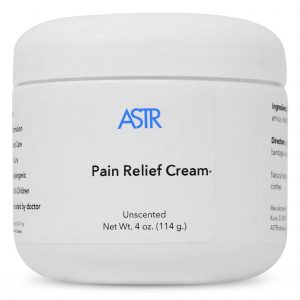Chiropractic Adjustment: Definition, Uses, Types, Treatment & Research Studies
Chiropractic Adjustment: Definition, Uses, Types, Treatment & Research Studies
What is Chiropractic Adjustment?
A chiropractic adjustment it is also called joint manipulation or joint mobilization. Chiropractic adjustment involves the chiropractor manually manipulating of the spine. Chiropractic adjustments may treat low back pain and any other abnormal functions of the body. It can also help with a “fixed” or “locked” joint, or joint that is not moving. The goal of an adjustment is to increase range of motion, reduce nerve irritability and improve function.
What does a Chiropractic Adjustment do?
A chiropractic adjustment is done to avoid any degeneration of soft tissue and to help normalize spinal function. The body’s natural healing process can begin to work properly once the nervous system is functioning well.
Types of Chiropractic Adjustment
An adjustment can either be a high velocity, low amplitude adjustment or manipulation. A quick thrust applied to the vertebrae releases the gas (joint cavitation) which releases the pressure within the joint.
Chiropractic Adjustment Research Studies
- A systematic review is a type of literature review that collect and critically analyze multiple research studies or papers. A systematic review by Rubinstein et al. researched the the effectiveness of spinal manipulation therapy for those suffering from chronic lower back pain.24 This study assessed 26 randomized controlled trials including 6070 participants.24 Evidence showed no significant difference between spinal manipulation therapy and other intervention approaches.24
- A systematic review is a type of literature review that collect and critically analyze multiple research studies or papers. A systematic review published by Canter and Ernst studied the effectiveness of spinal manipulation for treatment of multiple regions of pain, including, but not limited to, back and neck pain.32 16 trials were included for the purpose of this study.32 Evidence suggested that spinal manipulation was ineffective for all evaluated forms of pain.32
Based on the evidence presented in the included systematic reviews, spinal manipulation does not appear to be an effective form of treatment for different pain types, including back pain. While spinal manipulation is seen as ineffective, ASTR treatment has shown evidence in a recent study that show it can be effective for many evaluated forms of pain. ASTR stands for Advanced Soft Tissue Release, a manual therapy specialty developed by Dr. Joesph Jacobs, DPT. ASTR takes a holistic approach to treating the source of soft tissue restriction in a way that is virtually pain-free and highly effective.
References:
24. Rubinstein SM, Terwee CB, Assendelft WJ, Boer MRD, Tulder MWV. Spinal manipulative therapy for acute low-back pain. Spine. 2011;36(13):825-846. doi:10.1002/14651858.cd008880.pub2.
25. Gattie E, Cleland JA, Snodgrass S. The Effectiveness of Trigger Point Dry Needling for Musculoskeletal Conditions by Physical Therapists: A Systematic Review and Meta-analysis. Journal of Orthopaedic & Sports Physical Therapy. 2017;47(3):133-149. doi:10.2519/jospt.2017.7096.
26. Dunning J, Butts R, Mourad F, Young I, Flannagan S, Perreault T. Dry needling: a literature review with implications for clinical practice guidelines. Physical Therapy Reviews. 2014;19(4):252-265. doi:10.1179/1743288x13y.0000000118.
27. Morihisa R Eskew J McNamara A, et al. Dry Needling in subject with muscular trigger points in the lower quarter: a systematic review. Int J Sports Phys Ther. 2016;11(1):1-14.
28. Cotchett MP, Landorf KB, Munteanu SE. Effectiveness of dry needling and injections of myofascial trigger points associated with plantar heel pain: a systematic review. J Foot Ankle Res. 2010;3:18.
29. Cummings TM, White AR. Needling therapies in the management of myofascial trigger point pain: a systematic review.Arch Phys Med Rehabil 2001;82:986-92.
30. Xue CC, Helme RD, Gibson S, et al. Effect of electroacupuncture on opioid consumption in patients with chronic musculoskeletal pain: protocol of a randomised controlled trial. Trials. 2012;13:169. doi:10.1186/1745-6215-13-169.
31. Scott N. A., Guo B., Barton P. M., Gerwin R. D. Trigger point injections for chronic non-malignant musculoskeletal pain: a systematic review. Pain Medicine. 2009;10(1):54–69. doi: 10.1111/j.1526-4637.2008.00526.x.
32. Ernst E, Canter PH. A systematic review of systematic reviews of spinal manipulation. Journal of the Royal Society of Medicine. 2006;99(4):192-196.
Effective Pain Relief Home Treatment

- Fast results
- Treatment takes about 5 min a day
- Easy to use medical tools
- Natural holistic approach
- Treat the root cause of the problem
- Invented by a doctor who had chronic pain
- Supported by over 45 studies
ASTR Exceptionally Different
Reviews collected from various websites
Heal Faster




